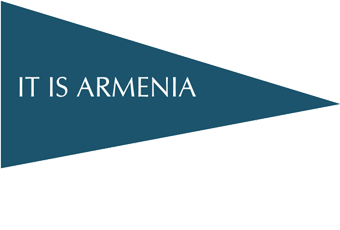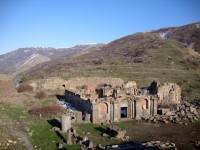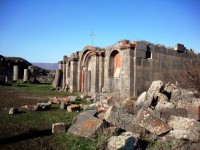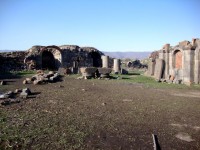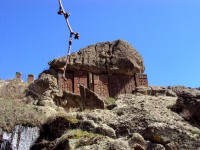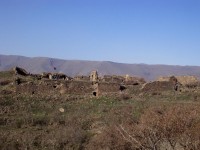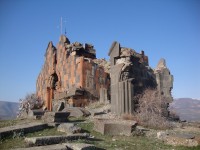Havuts Tar
The monastic complex Havuts Tar is located in the region (marz) of Kotayk, to the east of Garni, on the left, high bank of the river Azat. There was a pagan temple in pre-Christian Armenia. Taking into consideration the fact that Havuts Tar prided with being a center of writing manuscripts in the early Middle Ages, there probably was a temple to the god Tir (the god of writing, knowledge, and defender of science in Armenian mythology). In 1013, the count Grigor Magistros Pahlavuni built the church of St. Amenaprkich (Holly Saviour) in the place of the early medieval church. The monastic complex flourished during the 11th-14th centuries, but was destroyed by the earthquake in 1679 and was no longer restored. The complex consists of two groups of monuments. The main church (XIII c.) of the western group of monuments has a rectangular structure on the outside, with the vestries in the four corners. The walls, built on the principle of polychromy, (purely hewn reddish tuff), are rich in inscriptions. The dome and the roof of the church are ruined. Two single-aisle chapels, which are now half-ruined, are adjacent to it from the southern side. The eastern group of monuments has been thoroughly restored in the first half of the XVIII century, and the stones of the narthex (gavit) with four pilasters of the church and the monastery, built by Grigor Magistros Pahlavuni, were used during the building process. Havuts Tar was a large scientific center in medieval Armenia, where various books were written and illustrated.






